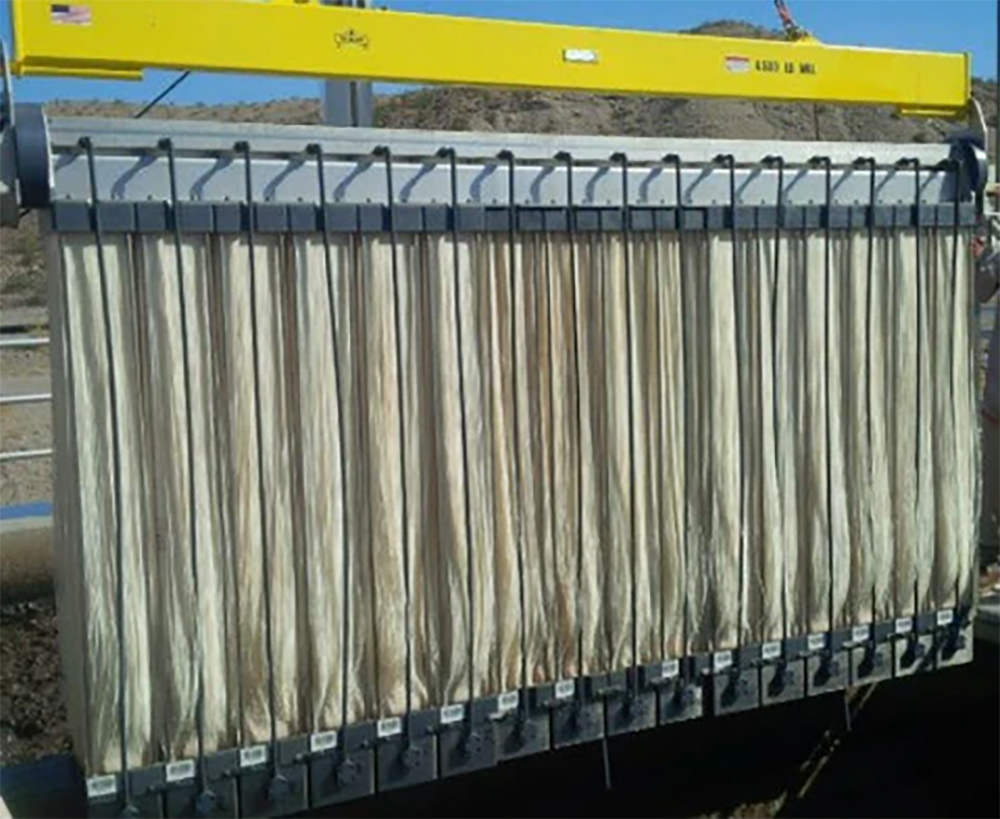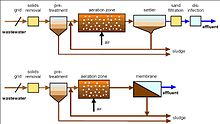How Membrane Bioreactor Technology Is Revolutionizing Wastewater Treatment
How Membrane Bioreactor Technology Is Revolutionizing Wastewater Treatment
Blog Article
How Membrane Layer Bioreactors Are Reinventing Water Purification Solutions
The appearance of membrane layer bioreactors (MBRs) represents a significant innovation in the field of water purification, merging biological treatment processes with advanced membrane layer filtration innovations. As international water scarcity intensifies, the function of MBRs in assisting in drinkable water reuse and sustainable water administration becomes progressively important.
Overview of Membrane Layer Bioreactors
Membrane layer bioreactors (MBRs) represent a substantial advancement in water purification innovation, as they incorporate biological treatment processes with membrane layer purification. This combination boosts the efficiency of wastewater treatment by using microbes to deteriorate organic pollutants while at the same time employing semi-permeable membrane layers to different treated water from put on hold pathogens and solids.
The MBR system generally includes an organic activator where the microbial populace metabolizes impurities, adhered to by a membrane layer filtering unit that keeps biomass and enables only tidy water to travel through. This double performance results in greater effluent high quality compared to standard therapy methods. MBRs can be run in both set and continuous flow modes, using adaptability in layout and application.
They also enable the recovery of water for reuse, thus adding to water sustainability efforts. Generally, MBRs are at the forefront of enhancing water therapy performance and high quality, showcasing the capacity for innovative remedies in environmental monitoring.
Benefits of MBR Modern Technology
The combination of biological treatment with membrane filtration supplies countless benefits for water purification procedures. One of the main advantages of Membrane layer Bioreactor (MBR) innovation is its ability to effectively get rid of both not natural and organic contaminants, resulting in top quality effluent. The membrane layers serve as a physical barrier, stopping suspended solids and microorganisms from going through, which enhances the overall safety and security and integrity of treated water.
In addition, MBR systems need a smaller footprint compared to traditional therapy methods, enabling for extra efficient room utilization. This portable design is particularly helpful in city setups where land is limited. MBRs also demonstrate operational versatility, suiting varying influent qualities and circulation rates without considerable efficiency deterioration.
Furthermore, the process offers boosted nutrient removal capabilities, especially for nitrogen and phosphorus, which are vital for stopping eutrophication in obtaining waters. The reduced sludge manufacturing connected with MBR modern technology additionally converts to reduce disposal costs, making it an economical solution in the future - Membrane Bioreactor. Generally, the benefits of MBR modern technology setting it as a leading choice for ingenious and lasting water purification systems, attending to both ecological and financial concerns
Applications in Water Purification
Applications of Membrane Bioreactor (MBR) modern technology in water filtration are varied and impactful, addressing various therapy needs throughout numerous fields. MBRs efficiently integrate organic treatment procedures with membrane purification, making them optimal for metropolitan wastewater treatment, commercial effluent administration, and even drinkable water reuse campaigns.
In local settings, MBRs are progressively employed to boost the top quality of treated wastewater, enabling conformity with rigid discharge guidelines and assisting in the recycling of water for watering and non-potable usages. Their small layout also makes them appropriate for city atmospheres where room is restricted.
Industrially, MBR innovation is used to deal with procedure water and wastewater, specifically in fields such as food and beverage, drugs, and textiles. By efficiently getting rid of pollutants and suspended solids, MBRs assist sectors lessen environmental impacts while recovering important resources from wastewater streams.
Additionally, MBRs are acquiring traction in decentralized water treatment applications, where small-scale systems can be released in remote locations or developing regions. This versatility makes it possible for neighborhoods to attain sustainable water management solutions, improving accessibility to clean water while lowering dependence on typical therapy approaches.
Study and Success Stories

In another instance, a textile production center in Bangladesh adopted MBR modern technology to resolve its wastewater obstacles. The system reduced chemical oxygen demand (COD) degrees from 1,200 mg/L to less than 100 mg/L, thus meeting regulative standards and substantially minimizing ecological effect.
The University of Cape Town's MBR installment has shown reliable in dealing with greywater for non-potable reuse on campus. This task not only conserves potable water yet also functions as an academic model for lasting methods.
Furthermore, a fish and shellfish handling plant in Norway utilized MBR technology to deal with effluents including high levels of natural matter, attaining over 90% pollutant elimination. These instance studies underscore MBR innovation's convenience and its vital function in enhancing water top Continue quality throughout diverse applications.
Future of Water Treatment Solutions
As worldwide water scarcity and air pollution difficulties increase, innovative water therapy solutions are coming to be increasingly necessary to ensure sustainable access to clean water. The future of water therapy exists in the assimilation of innovative innovations that improve the effectiveness and effectiveness of filtration procedures. Membrane bioreactors (MBRs) go to the center of this evolution, integrating biological treatment with membrane filtration to generate top quality effluent appropriate for various applications.

Arising trends such as source recovery from wastewater, including nutrients and energy, will certainly even more transform therapy facilities right into eco-friendly centers. Moreover, improvements in nanotechnology and membrane products promise enhanced performance and longevity of purification systems.

Final Thought
Their duty in potable water reuse and sustainable water administration highlights their relevance in dealing with worldwide water deficiency obstacles. Continued research and advancement will certainly additionally boost the efficacy and adoption of MBR innovation, making sure a resistant future for water therapy solutions.
The development of membrane bioreactors (MBRs) represents a considerable improvement in the area of water filtration, combining organic therapy procedures with innovative membrane layer purification modern technologies. As worldwide water shortage escalates, the duty of MBRs in facilitating safe and clean water reuse and lasting water monitoring comes to be significantly important. They also enable the recovery of water for reuse, thus adding to water sustainability efforts.As worldwide water deficiency and pollution difficulties escalate, cutting-edge water therapy options are ending up being progressively vital to guarantee sustainable accessibility to tidy water. Their function in potable water reuse see this here and lasting water monitoring highlights their value in dealing with global water deficiency difficulties.
Report this page